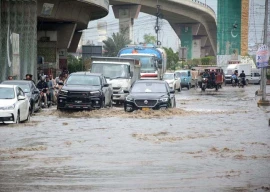
Analysis of the soil samples retrieved by the first people to land on the moon's surface in the 1960s and 1970s has shown that the lunar atmosphere is created and sustained primarily by the effects of meteorites, large and small, striking the moon's surface, researchers have said.
The NASA astronauts on the moon missions had discovered a previously unknown lunar characteristic -- it has an atmosphere, though quite tenuous, and the soil samples they retrieved are now revealing the main physical process driving this atmosphere.
Researchers analysed which forms of two elements – potassium and rubidium – were present in nine tiny soil samples from five Apollo missions. "Meteorite impacts generate high temperatures ranging from 2,000-6,000°Celsius or 3,600-10,800°Fahrenheit," cosmochemist Nicole Nie said on Friday.
"These extreme temperatures melt and vaporise rocks on the lunar surface, similar to how heat vaporises water, releasing atoms into the atmosphere," Nie, Massachusetts Institute of Technology planetary scientist and lead author of the study published in the journal Science Advances, said.
The lunar atmosphere is extremely thin and classified as an exosphere, meaning atoms do not collide with each other because their numbers are so sparse, in contrast to Earth's thick and stable atmosphere. "The Apollo missions carried instruments to the lunar surface which detected atoms in the air," Nie said.
In 2013, NASA sent the robotic Lunar Atmosphere and Dust Environment Explorer (LADEE) spacecraft to orbit the moon to study its atmosphere and surface environment. It identified two processes, known as space weathering, at work – the meteorite impacts and a phenomenon called solar wind sputtering.










1722521491-0/Ryan-Reynolds-TJ-Miller-0002-(1)1722521491-0-270x192.webp)








COMMENTS
Comments are moderated and generally will be posted if they are on-topic and not abusive.
For more information, please see our Comments FAQ